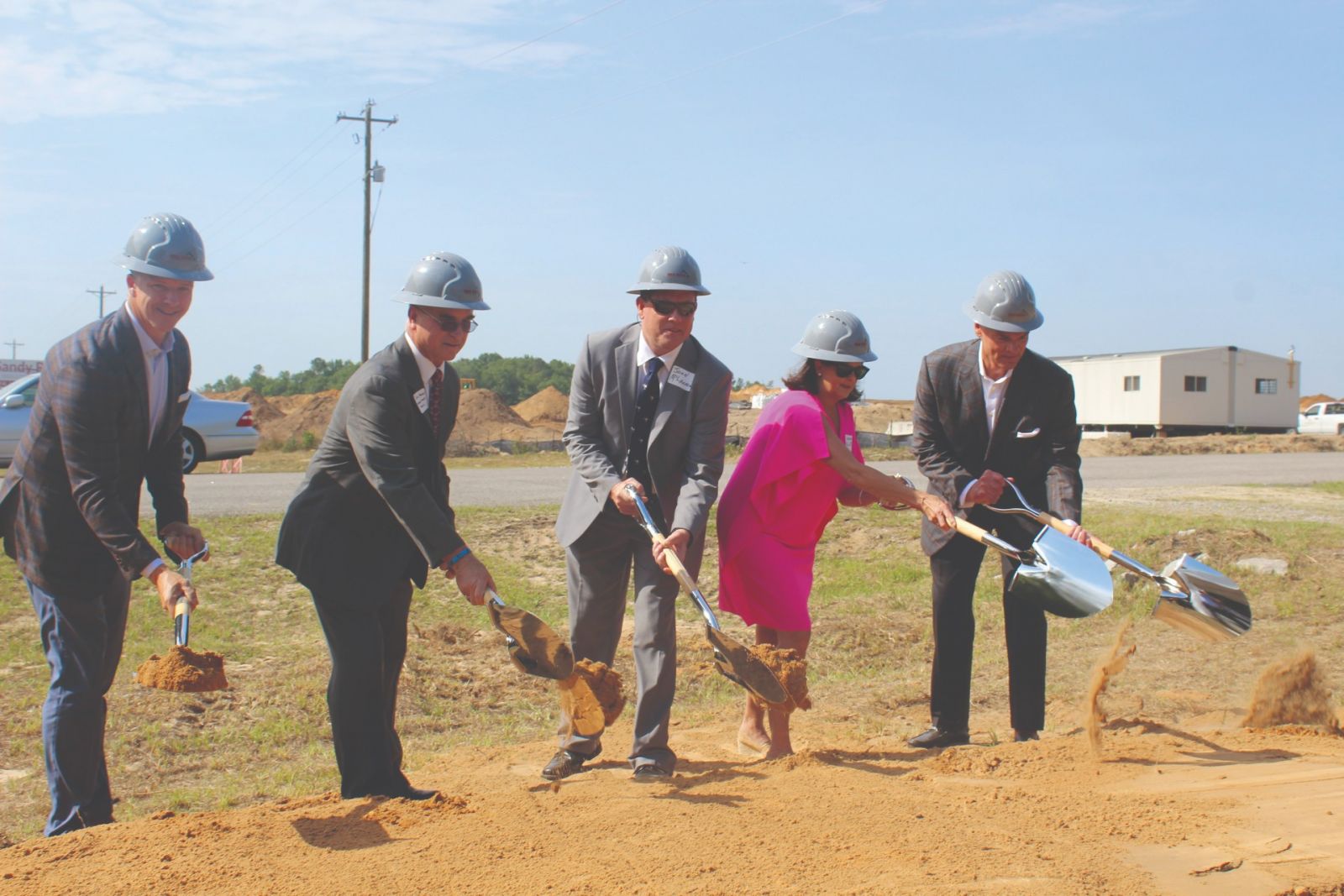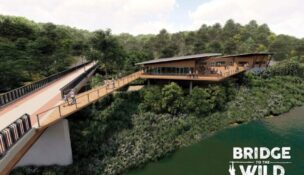Industrial demand driving speculative growth
Christina Lee Knauss //July 18, 2022//

One of the hottest real estate markets in South Carolina involves buildings that do not even have specific occupants yet.
Known as speculative buildings, they are built to provide ready-to-occupy space for companies looking for a place to set up new operations or expand existing ones. In the Midlands and around South Carolina in general, the need for speculative space for manufacturing as well as warehousing and distribution is booming.
There are multiple reasons behind the boom, most of them fueled by the pandemic. COVID-19 accelerated already increasing demand for next-day shipping and air, while supply chain disruptions increased time and costs for construction, leading more companies to seek out pre-constructed buildings.
The region’s current appetite for industrial buildings, speculative ones in particular, is confronting developers, design firms and construction companies with unprecedented demand. One example is SeamonWhiteside, a full-service land design firm headquartered in Mount Pleasant with offices in Summerville, Greenville, Spartanburg and Charlotte.
“In previous years, SeamonWhiteside was developing 100,000 square feet per year in industrial projects, and now we are projecting almost 30 million square feet in 2022,” said William O’Neal, the company’s vice president. “This is not only a change for SeamonWhiteside but a change for South Carolina as a whole. We have never seen this volume of industrial projects in our state.”
O’Neal noted the boom in speculative industrial demand in South Carolina is not only following national trends, but also can be attributed to the rapid expansion of the Charleston port, the large number of people moving to the area, and the increased number of suppliers moving to the state to serve large industries such as BMW in the Upstate, Boeing and Volvo in Charleston, and Mark Anthony Brewing in the Midlands.
A recent report from Colliers South Carolina shows that demand for industrial space overall, speculative real estate included, continued to be unparalleled in the first quarter of 2022 despite an increase in rental rates. According to the report, 21.5 million square feet of industrial buildings is under construction in the state, with another 25 million square feet in proposed developments. A total of 9.8 million square feet is slated to deliver in 2022, with most of that pre-leased.
Meeting the demand
To help meet the rising demand in the Midlands, several large speculative industrial projects are already under construction or have been announced recently.
Groundbreaking for the largest expandable speculative building ever constructed in central South Carolina took place June 21 at the Sandy Run Industrial Park. The 497,952-square-foot-building, located at the intersection of Interstate 26 and U.S. Highway 21, is a project of Columbia-based Red Rock Developments, the exclusive developer of build-to-suit and speculative buildings within the industrial park. The structure, located in the Calhoun County section of the industrial park, is expandable to 663,836 square feet with a capability for cross-dock distribution and a clearance of 36 feet.
On June 29, local developers Saxe Gotha Spec LLC announced plans for a 43,750-square-foot speculative industrial building on Old Wire Road in Saxe Gotha Industrial Park in West Columbia, which is already home to Amazon, Nephron Pharmaceuticals and other tenants.
The Class A building, scheduled for completion in the first quarter of 2023, will feature 28-foot ceiling heights, 43 car parking spaces, five dock-high doors and one drive-in door, an ESFR (early suppression, fast response) fire suppression system and LED lighting throughout.
Colliers South Carolina is handling the leasing for both buildings, and company officials say they couldn’t come at a better time because the Midlands has a need for speculative space of all sizes.
“Free-standing industrial buildings under 50,000 square feet are the most underserved product class in the Columbia market,” said Chuck Salley, managing director of industrial services in Colliers’ Columbia office.
Expanded availability of large and expandable speculative property like the Sandy Run site is important because many companies seeking larger spaces have had to pass up the Midlands in recent years simply because there were not enough sites of that size available, according to Thomas Beard, vice president of industrial services for Colliers South Carolina.
“Our market has been passed over by a lot of users that want to be in the Columbia market but end up having to look elsewhere, usually the next closest market, that has larger buildings either under construction or proposed,” Beard said. “Those larger sites are really the bread and butter of this market right now. There is a huge demand for that size product right now.”
However, Richland County’s days of being passed over by companies looking to relocate to South Carolina might be in the past, Beard said, because of several factors. Available space in the Greenville and Charleston areas is becoming harder to find, and a move to by Richland County to become more developer-friendly through fee-in-lieu tax agreements and revenue credits has piqued developers’ interest.
“We’re getting more interest and more calls on a daily basis from national and regional groups that are realizing that the Columbia market is worth looking at,” Beard said.
Other large speculative projects in Richland County include Magnus Development Partners’ planned 200,000-square-foot speculative building on county-owned property at Blythewood’s Northpoint Industrial Park. And in May, St. Louis-based Summit Real Estate Group announced plans to invest $28.6 million toward development of a 350,000-square-foot speculative building in Richland County’s Pineview Industrial Park, to be located on 34 acres at the intersection of Bluff and Longwood roads.
Charlotte-based commercial real estate firm Collett has also purchased about 19 acres of land from the county for construction of a 210,000-square foot speculative site.
Casual observers might think all this will lead to an awful lot of empty buildings, but to borrow a quote from the well-known baseball movie Field of Dreams, the idea behind speculative real estate is “If you build it, they will come.”
Developers say the tenants start calling shortly after projects are announced. At least two tenants had already expressed interest in the new Sandy Run building even before the groundbreaking ceremony took place, said William C. Smith, Jr., CEO of Red Rock Developments.
The increasing demand for speculative industrial real estate and industrial buildings in general has caused some companies like SeamonWhiteside to completely retool their business model, according to O’Neal.
“It’s a complete 180 in our business model because before COVID-19 we focused a lot on retail, hotels and hospitality and offices, and we’re not seeing as many of those at the same pace as we did pre-2020,” O’Neal said. “Smaller retail particularly was a really hot sector then, but it has slowed down, while warehousing, distribution and manufacturing has taken off.”
SeamonWhiteside started looking to expand its industrial sector about five years ago, predicting a need for more manufacturing and warehousing space in the U.S, as the demand for next-day shipping and delivery became a standard.
He said the company’s predictions paid off with the change in business and consumer needs that came with COVID-19, as well as the increasing trend for “right-shoring,” with more U.S. companies bringing operations back here from overseas and as a result causing a boom in the need for industrial and warehouse space.
Beard from Colliers said the market for speculative industrial real estate is not likely to slow down any time soon.
“Speed to market is everything these days,” he said. “You rarely ever have a manufacturer come into a market and say they have time for a building to be constructed.
“Everybody needs readily available space to fulfill the requirements they have, and they’re really only willing to consider buildings that are proposed or already under construction.”
S















